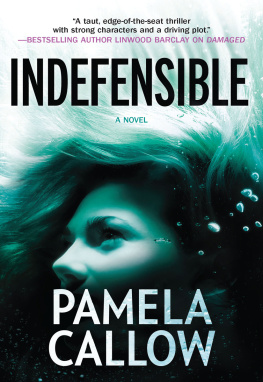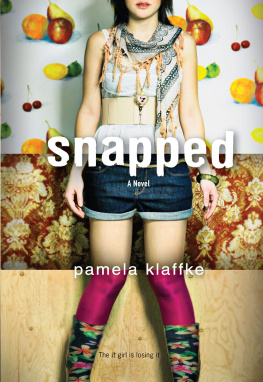Thank you for buying this ebook, published by NYU Press.
Sign up for our e-newsletters to receive information about forthcoming books, special discounts, and more!
Sign Up!
About NYU Press
A publisher of original scholarship since its founding in 1916, New York University Press Produces more than 100 new books each year, with a backlist of 3,000 titles in print. Working across the humanities and social sciences, NYU Press has award-winning lists in sociology, law, cultural and American studies, religion, American history, anthropology, politics, criminology, media and communication, literary studies, and psychology.
MAKING WOMENS HISTORIES
Making Womens Histories
Beyond National Perspectives
Edited by Pamela S. Nadell and Kate Haulman
NEW YORK UNIVERSITY PRESS
New York and London
www.nyupress.org
2013 by New York University
All rights reserved
References to Internet websites (URLs) were accurate at the time of writing. Neither the author nor New York University Press is responsible for URLs that may have expired or changed since the manuscript was prepared.
This book was published with the generous support of American Universitys Patrick Clendenen Fund for Womens and Gender History.
LIBRARY OF CONGRESS CATALOGING-IN-PUBLICATION DATA
Making womens histories : beyond national perspectives / edited by Pamela S. Nadell and Kate Haulman.
pages cm
Includes bibliographical references and index.
ISBN 978-0-8147-5890-8 (cloth : alkaline paper) ISBN 978-0-8147-5891-5 (paper : alkaline paper) ISBN 978-0-8147-5892-2 (ebook) ISBN 978-0-8147-5922-6 (ebook)
1. WomenHistoriography. 2. Sex roleHistoriography. 3. World historyHistoriography. 4. HistoriographySocial aspects. 5. HistoriographyPolitical aspects. 6. Women historians. I. Nadell, Pamela Susan. II. Haulman, Kate.
HQ1122.M345 2012
907.202dc23
2012032444
New York University Press books are printed on acid-free paper, and their binding materials are chosen for strength and durability. We strive to use environmentally responsible suppliers and materials to the greatest extent possible in publishing our books.
Manufactured in the United States of America
10 9 8 7 6 5 4 3 2 1
In memory of Robert Griffith (19402011)
Contents
Pamela S. Nadell and Kate Haulman
IMAGINING NEW HISTORIES:
LATE-TWENTIETH-CENTURY TRAJECTORIES
Kathy Peiss
Barbara Alpern Engel
Claire Robertson
Anna Clark
Arianne Chernock
Lisa Pollard
Mytheli Sreenivas
Ulrike Strasser and Heidi Tinsman
Cristina Zaccarini
Jocelyn Olcott
Acknowledgments
Sometimes scholars cannot recall the precise origins of a project. That, however, is not the case with this volume. It was the spring of 2008, in the midst of the American University conference With Vision Flying: New Perspectives on Womens and Gender History, when the idea came to life. That such a conference ever happened, and that this book is now in your hands, is due in part to the efforts and encouragement of our colleague, friend, and then department chair, the late Professor Robert Griffith. When a fund created in the 1890s for the education of young women alone, unexpectedly fell into his lap, Bob, with his characteristic grand vision, imagined a series of projects which would advance the field of womens and gender history now that the academy had long moved beyond the need to provide for the education of young women alone. American Universitys Clendenen Fund for Womens and Gender History was born.
Making Womens Histories: Beyond National Perspectives has not collected the papers originally presented at With Vision Flying (which took its title from a work by the nineteenth-century poet Rachel Luzzatto Morpurgo). But the conversations that conference engendered caused us to imagine a book in which prominent scholars of womens history, trained in various national histories, would reflect on the intellectual and political production of womens and gender history. With that vision to guide us, we invited contributors; the result is this volume.
Our debts are many, and it gives us great pleasure to acknowledge them. First, we thank our contributors. (With the exception of one pair of authors who revised a previously published essay for our purposes, all wrote new chapters for this volume.) They distilled their considerable knowledge of the historiographies on women and gender in their particular fields into their chapters. With good cheer and collegiality, all of themArianne Chernock, Anna Clark, Barbara Alpern Engel, Jocelyn Olcott, Kathy Peiss, Lisa Pollard, Claire Robertson, Mytheli Sreenivas, Ulrike Strasser, Heidi Tinsman, Cristina Zaccarinimet our deadlines, dialogued with us about our suggestions for revisions, and played major roles in shaping the book.
NYU Presss anonymous reviewers helped us to refine our original conception. As always, it is a special pleasure to thank NYU Presss editor extraordinaire Jennifer Hammer, justly famed both for the alacrity with which she responds to emails and more importantly for her wise vision about the making of books. We also thank Universiteit van Amsterdam Professor of History and Gender Studies Frances Gouda for her insights.
Conversations with our colleagues in American Universitys Department of History and across campus buoyed us. We are deeply grateful to American Universitys Clendenen Fund for Womens and Gender History, which has supported this project in multiple ways, and especially to our Dean Peter Starr and former Dean Kay Mussell, both of whom understood from the beginning how this project would advance the aims of the Clendenen Fund.
We thank our families for providing a different kind of joyous support and much needed distractionsKates husband Guy Nelson and son Thomas; Pams husband Ed Farber, son Yoni, and daughter Orly. But we have dedicated other books to them already. This one we dedicate to the memory of Bob.
It may seem odd to dedicate a book, entirely written by women, about the production of womens history, to a man, but this dedication affirms what our book provesthe centrality and capaciousness of this field of intellectual production which has touched every sphere of the historical profession. Robert Griffith was a distinguished scholar, beloved teacher, and visionary administrator, and, with his loving wife Barbara and their family at his side, a remarkable human being. We remember Bob fondly, and his genuine enthusiasm for this book, which to our sorrow, he did not live to see in print. We were blessed to have had him in our lives for the time he spent among us.
Writing Womens History across Time and Space
Introduction
PAMELA S. NADELL AND KATE HAULMAN
My commitment to womens history came out of my life, not out of my head, wrote the pioneering historian Gerda Lerner. As a graduate student, Lerner had encountered a world of significant knowledge, in which women seemed not to exist. She dedicated her career to the project of remaking that body of knowledge, demanding that it include the lives and experiences of women as well as of men.










